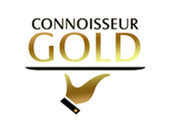Edible Gold Leaf Across the World - Spain
- by sam@wrightsoflymm.co.uk User
A Glimmering Legacy: The History and Uses of Edible Gold Leaf in Spain
In the world of culinary luxury, few ingredients evoke as much fascination as edible gold—and in Spanish, this opulent touch is known as "oro comestible." Whether used to decorate fine pastries, chocolates, or even gourmet dishes, oro comestible adds a shimmer of sophistication. A more delicate and artistic form of this ingredient is "pan de oro comestible," or edible gold leaf, which refers to ultra-thin sheets of gold applied to food for an elegant, luminous finish. Both terms reflect not only the ingredient’s edible nature but also its role in enhancing the visual and sensory experience of a dish.
Edible gold leaf, 24 carat gold leaf, 23 carat gold leaf and gold flakes, and even silver flakes and dust have become prized tools for chefs to elevate both presentation and prestige. Let’s take a deep dive into the history and modern-day uses of these luxurious additions to Spanish cuisine.
The Origins of Edible Gold Leaf in Spain
The history of edible gold leaf in Spain can be traced back to the influence of Moorish culture during the Al-Andalus period (711–1492). The Moors introduced Spain to the idea of combining art and food, creating rich and elaborate dishes that often mirrored their opulent architecture. Gold, which was revered both spiritually and symbolically, began appearing in cosmetic and medicinal concoctions, and later, in food.
In medieval Spain, gold leaf wasn’t just about aesthetics. It was believed to have health benefits—used by alchemists and apothecaries as an elixir of vitality. It was often applied to sweets, wines, and ceremonial dishes served during noble feasts and religious festivals. Spanish royalty, influenced by their European counterparts, embraced gold-adorned dishes as a sign of divine favour and wealth.
The Quality: 24 Carat vs 23 Carat Gold Leaf
When we talk about edible gold today, purity matters. 24 carat gold is considered pure gold, free from any additives that could affect its safety when consumed. This is the standard used for most high-end culinary applications in Spain and beyond.
23 carat gold leaf is also popular, containing a small percentage of silver to improve its malleability without compromising edibility. Both are safe for human consumption when labelled as "edible gold," but the choice often comes down to the desired look and budget—23 carat being slightly more affordable while still stunning in appearance.
Modern Culinary Uses Across Spain
High-End Gastronomy
Today, Spain is a powerhouse of avant-garde cuisine, and chefs like Ferran Adrià and the Roca brothers have embraced gold leaf, gold flakes, and even gold dust in their creations. Whether it’s a foie gras terrine with 24 carat gold leaf or a gold-dusted chocolate truffle, these ingredients offer an unmatched level of sophistication.
Pastry and Confectionery
In patisseries from Madrid to Barcelona, gold flakes and silver dust are frequently sprinkled atop macarons, cakes, and traditional desserts like turrón or polvorones. These glittering touches aren't just for show—they enhance the celebratory feel of special occasions like weddings, holidays, and festivals.
Cocktail Culture
The Spanish cocktail scene is also shimmering with innovation. Bartenders are now using gold dust and silver flakes to rim glasses or float within signature drinks. A gin and tonic garnished with a floating 23 carat gold flake isn’t just a drink—it’s an experience.
Symbolism and Luxury
Beyond its visual impact, edible gold in Spain carries deep cultural meaning. In a country where art, tradition, and culinary innovation coexist, gold symbolizes excellence and craftsmanship. Using edible gold in dishes is not just about showing wealth—it’s about honouring the beauty and legacy of Spanish gastronomy.
Silver’s Subtle Sparkle
While gold dominates the luxury scene, silver flakes and silver dust are equally popular, especially in desserts and drinks. Their cooler shimmer complements certain ingredients better, and they're often used in contrast with gold to create visually dynamic plating.
Conclusion: The Taste of Elegance
Whether it’s 23 carat gold flakes dancing on a chocolate mousse or silver dust adding a wintery glow to a cava cocktail, Spain continues to embrace the sparkle of precious metals in the kitchen. Rooted in history and thriving in modern cuisine, edible gold and silver remain timeless symbols of celebration, refinement, and artistry.
So next time you spot that delicate gold leaf on a tapa or truffle, remember—you’re not just enjoying a luxury ingredient. You’re tasting centuries of Spanish tradition and flair.





